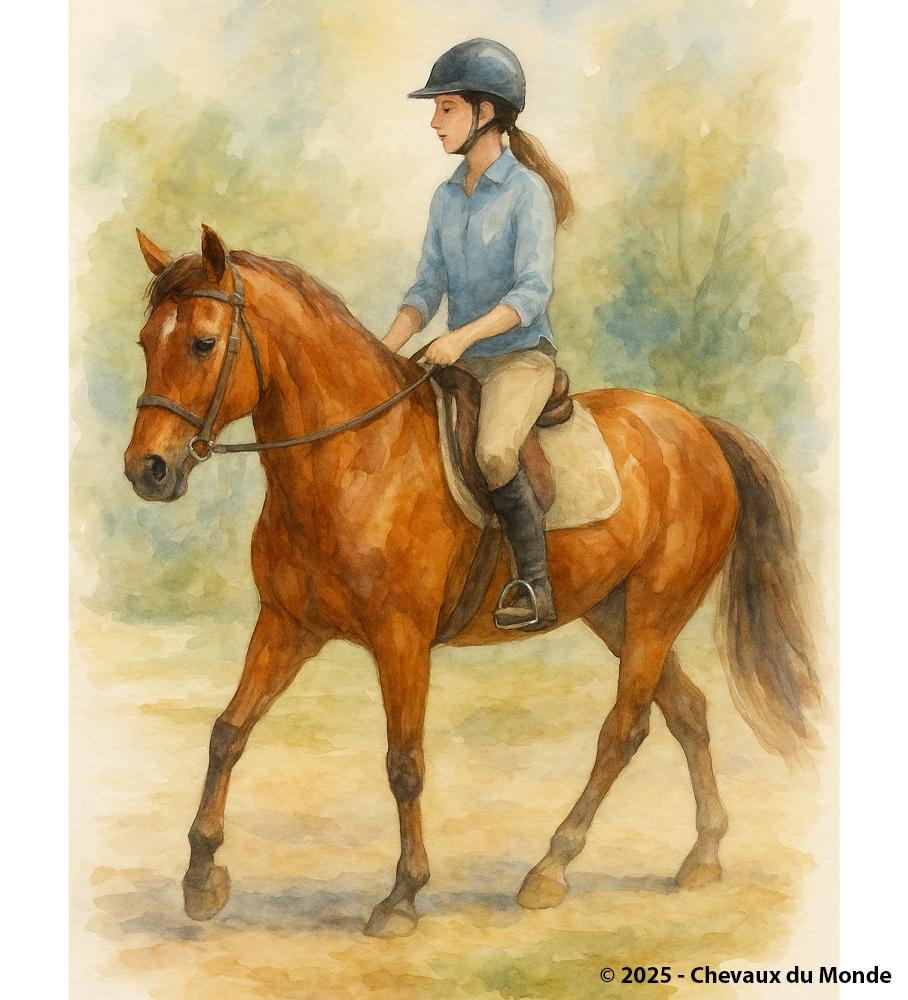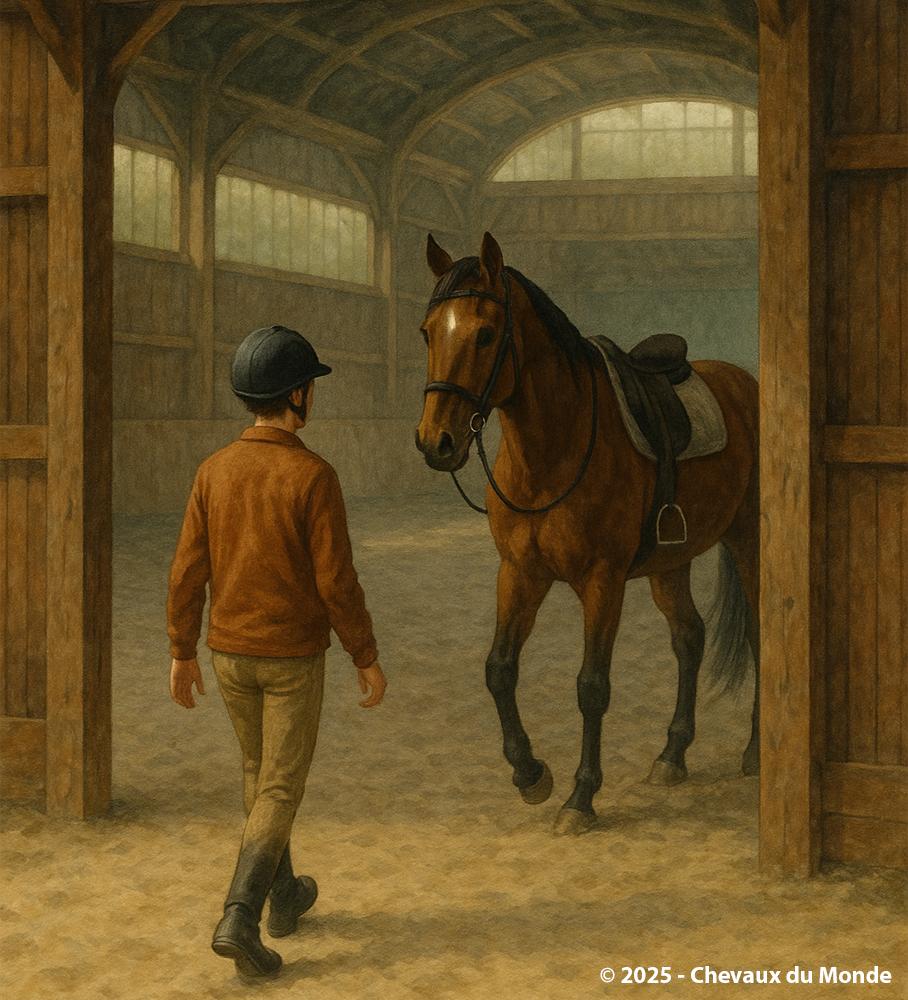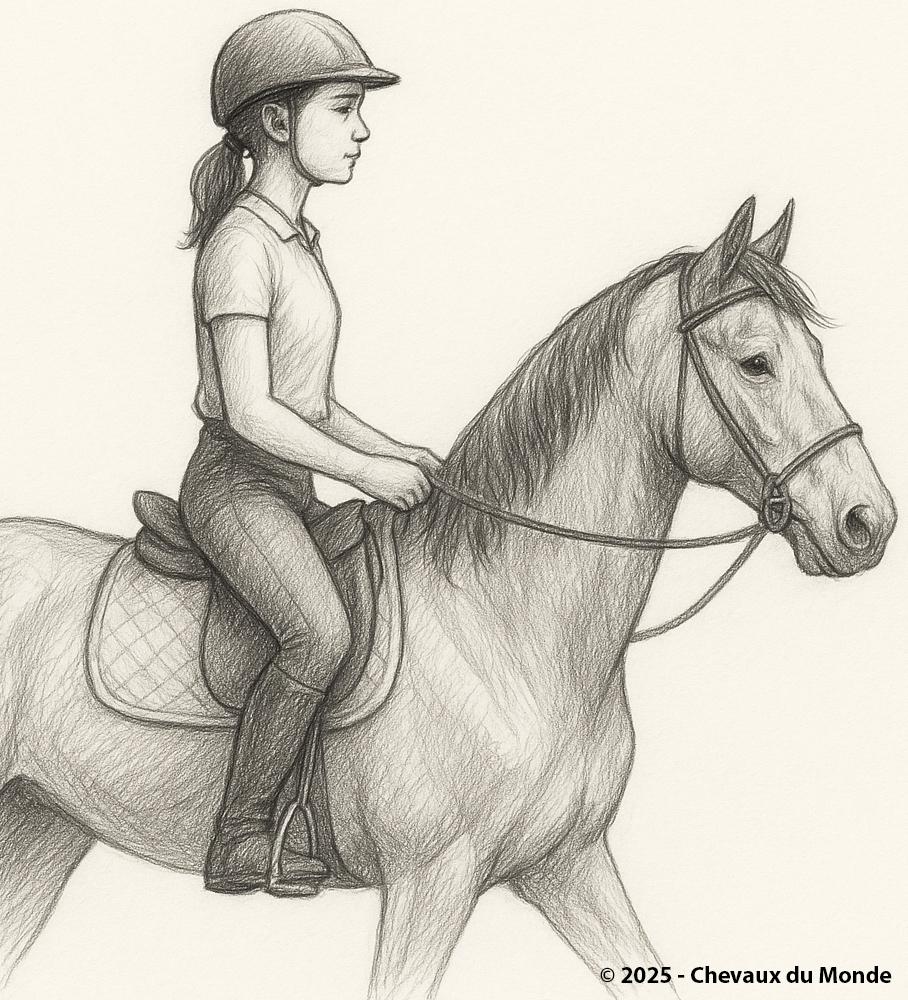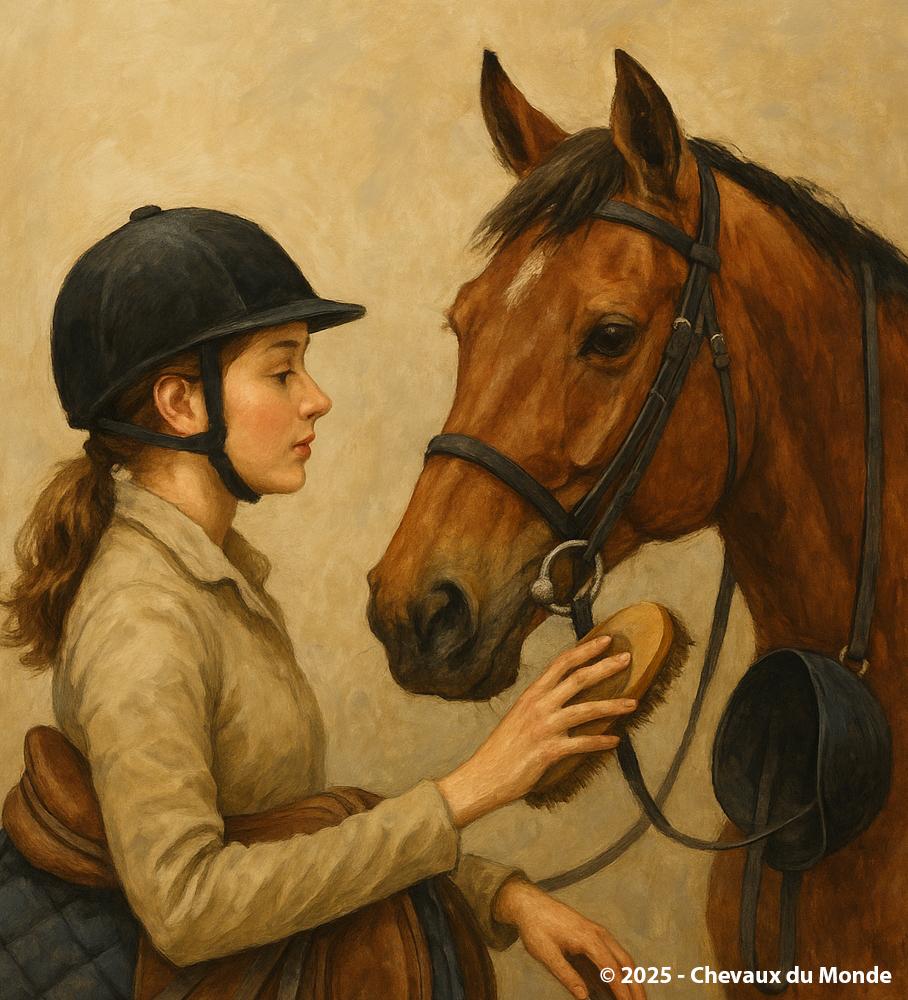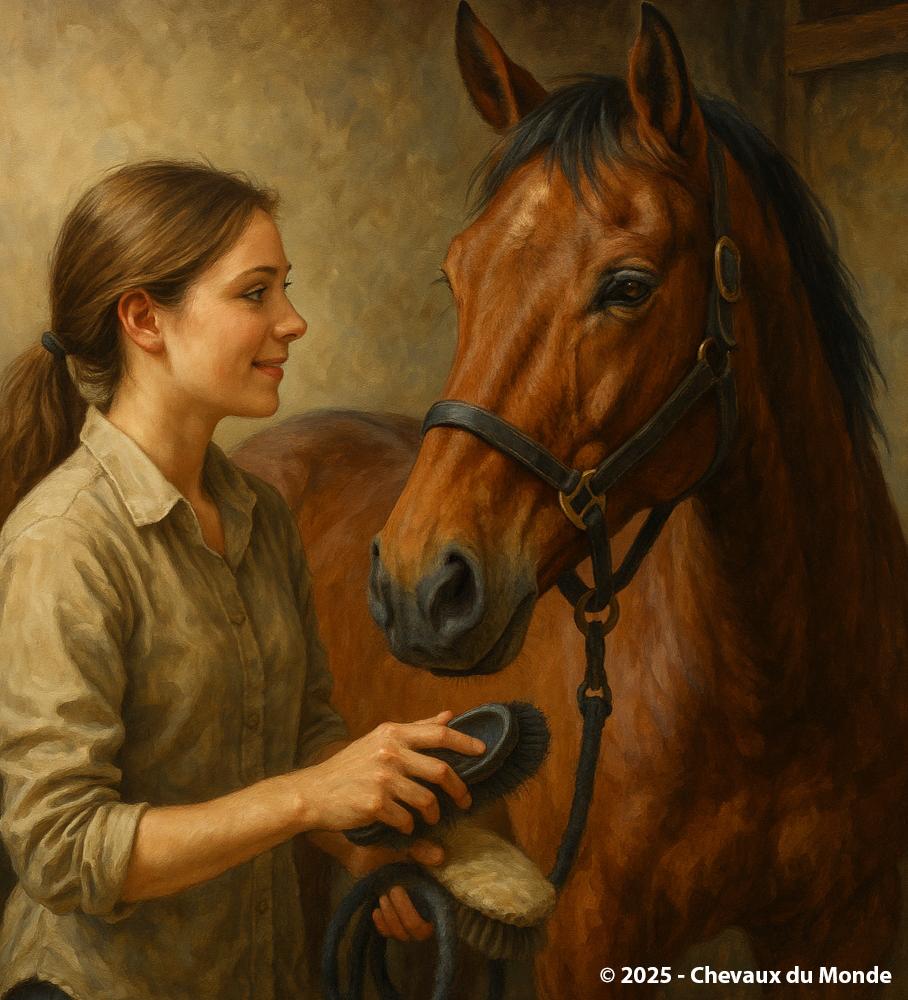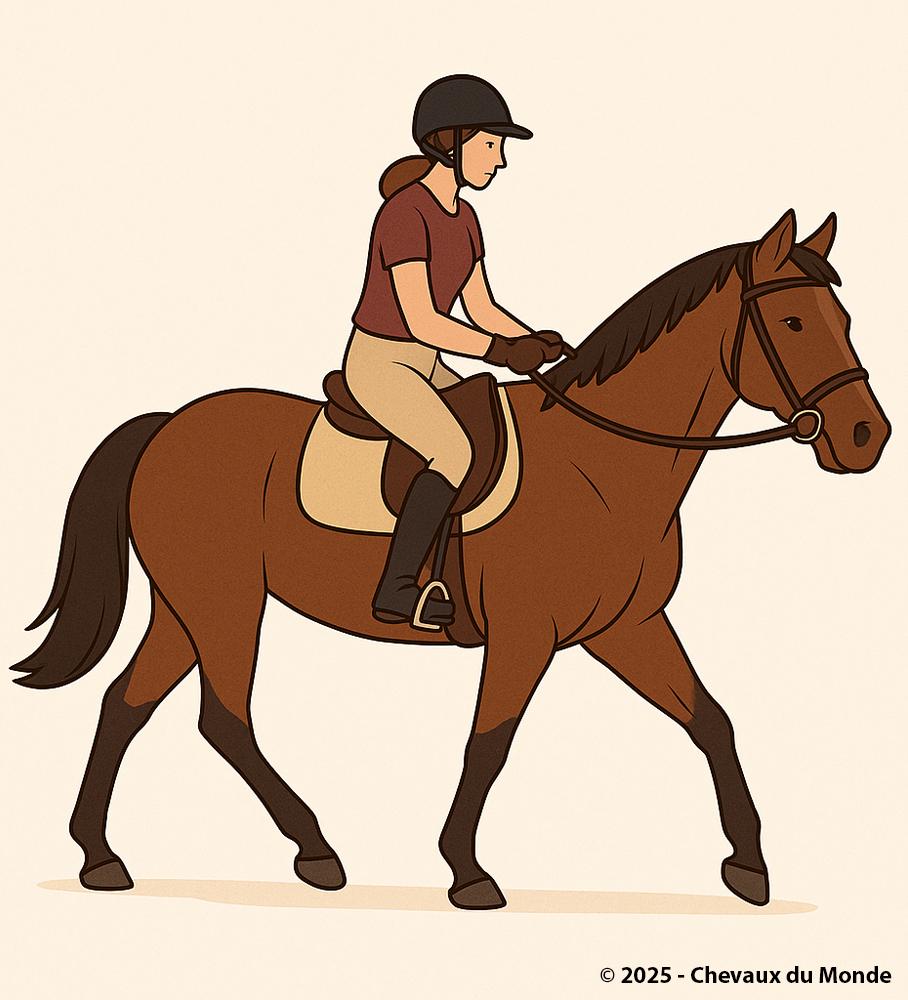ESSENTIAL EQUIPMENT FOR STARTING HORSE RIDING

Essential gear: starting horseback riding requires proper equipment for safety, comfort, and learning.
Learning to ride a horse requires more than just enthusiasm: a minimum of suitable equipment is essential, both for the rider’s safety and the horse’s comfort. This guide presents the basic equipment every beginner needs to start riding in the best conditions.
I. Rider’s Equipment
1. Safety First
- Riding helmet: Essential and mandatory in all riding schools, the helmet protects the head in case of a fall. It must be certified (EN 1384 or ASTM/SEI standard) and properly fitted.
- Body protector (safety vest): Recommended especially for show jumping or cross-country, it protects the back and ribs. For children, it is often required from their first jumping lessons.
2. Suitable Clothing
- Riding breeches: Designed without inner seams to avoid chafing.
- Riding boots or paddock boots with half chaps: Provide good leg support and prevent the foot from slipping through the stirrup.
- Gloves: Protect from rein friction and improve grip.
- Close-fitting top (t-shirt, polo, or sweater): Avoid loose clothing that could hinder movement or get caught.
3. Useful Accessories
- Light riding crop: Used as an aid, not as punishment.
- Hair ties or hairnet: For safety and neat appearance.
- Waterproof jacket: Practical for outdoor lessons.
II. Horse Equipment
1. Tack
- Bridle: Made up of the headpiece, bit, and reins, it allows the rider to steer the horse.
- Saddle: Should fit both the horse’s back and the rider’s level (general-purpose saddles are ideal for beginners).
- Saddle pad: Protects the horse’s back from friction and absorbs sweat.
- Stirrups and leathers: Essential for rider stability.
2. Protective Gear
- Leg boots or brushing boots: Protect the legs from knocks, especially during flatwork or jumping.
- Bell boots: Prevent the horse from injuring itself by overreaching with its hind legs.
III. Grooming Equipment
1. Grooming Kit Essentials
- Curry comb: Loosens dust and dead hair.
- Hard brush (dandy brush): Cleans the horse’s body.
- Soft brush: For sensitive areas (head, belly).
- Hoof pick: Cleans hooves and removes stones.
- Mane comb or brush: Maintains mane and tail.
- Sponge: For eyes and nostrils.
2. Complementary Products
- Hoof oil or grease: Maintains hoof health and suppleness.
- Fly repellent: Essential in summer.
- Light rug or sheet: Protects the horse in the stable or after work.
IV. Progressive Investment
1. Borrowed Equipment
In most riding schools, tack and sometimes grooming kits are provided. Beginners should first invest in their own safety gear and clothing.
2. Priority Purchases
- Step 1: helmet + breeches + boots or boots/chaps
- Step 2: gloves + crop + grooming kit
- Step 3: personal tack if becoming an owner or half-boarder
Conclusion
Starting horse riding does not require buying all available equipment at once, but some items such as the helmet, boots, and breeches are essential. Over time, the rider can build their own grooming kit and, if becoming an owner, acquire tack adapted to their horse.
"Equipping yourself properly from the start means ensuring safety, comfort, and well-being for both rider and horse."

